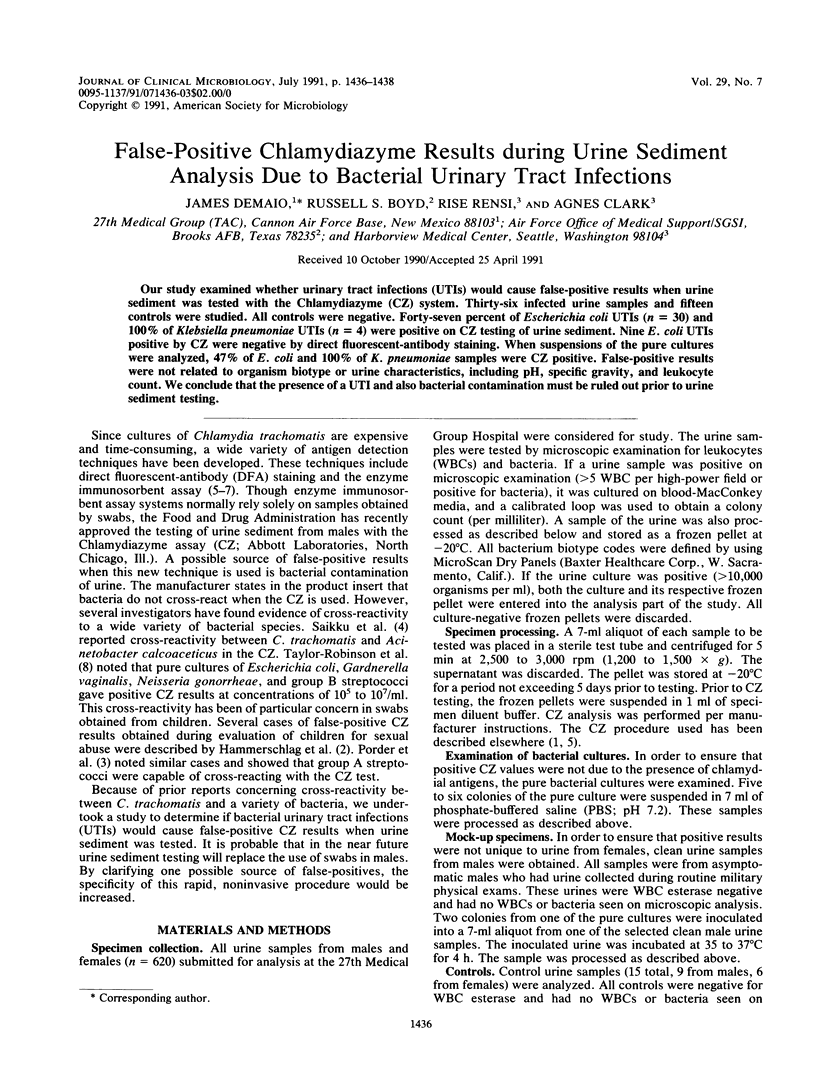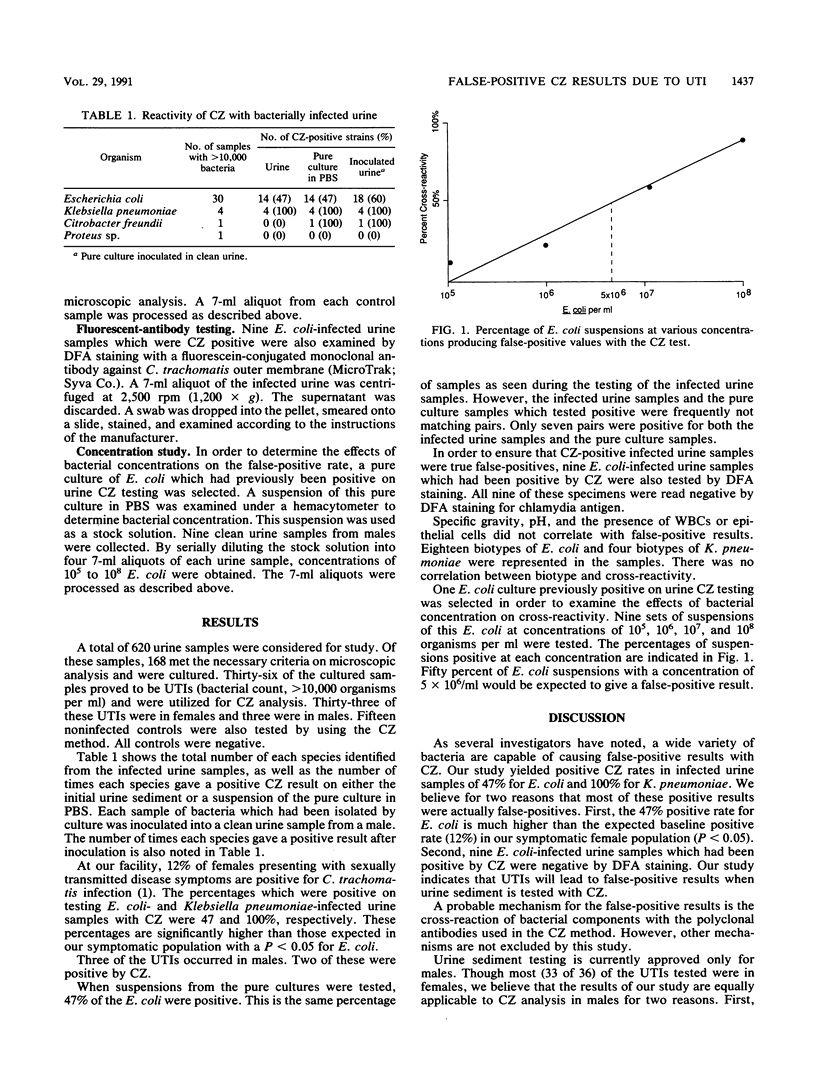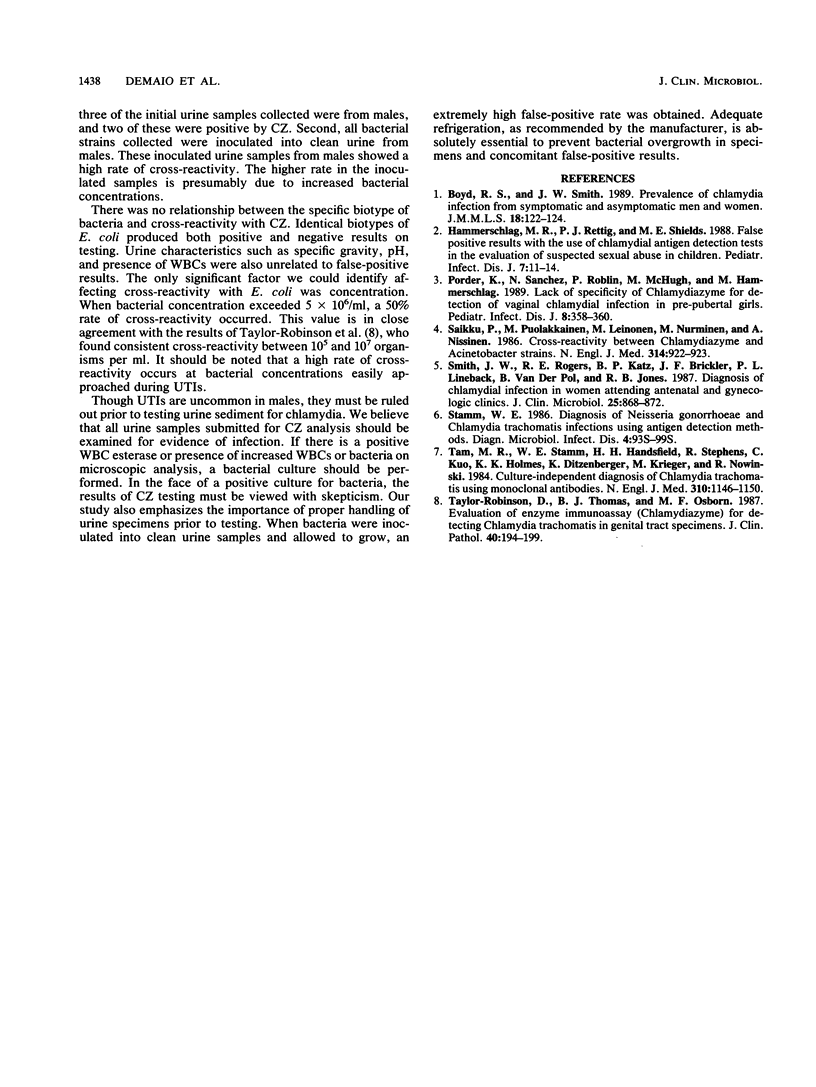Abstract
Our study examined whether urinary tract infections (UTIs) would cause false-positive results when urine sediment was tested with the Chlamydiazyme (CZ) system. Thirty-six infected urine samples and fifteen controls were studied. All controls were negative. Forty-seven percent of Escherichia coli UTIs (n = 30) and 100% of Klebsiella pneumoniae UTIs (n = 4) were positive on CZ testing of urine sediment. Nine E. coli UTIs positive by CZ were negative by direct fluorescent-antibody staining. When suspensions of the pure cultures were analyzed, 47% of E. coli and 100% of K. pneumoniae samples were CZ positive. False-positive results were not related to organism biotype or urine characteristics, including pH, specific gravity, and leukocyte count. We conclude that the presence of a UTI and also bacterial contamination must be ruled out prior to urine sediment testing.
Full text
PDF


Selected References
These references are in PubMed. This may not be the complete list of references from this article.
- Hammerschlag M. R., Rettig P. J., Shields M. E. False positive results with the use of chlamydial antigen detection tests in the evaluation of suspected sexual abuse in children. Pediatr Infect Dis J. 1988 Jan;7(1):11–14. doi: 10.1097/00006454-198801000-00004. [DOI] [PubMed] [Google Scholar]
- Porder K., Sanchez N., Roblin P. M., McHugh M., Hammerschlag M. R. Lack of specificity of Chlamydiazyme for detection of vaginal chlamydial infection in prepubertal girls. Pediatr Infect Dis J. 1989 Jun;8(6):358–360. doi: 10.1097/00006454-198906000-00006. [DOI] [PubMed] [Google Scholar]
- Saikku P., Puolakkainen M., Leinonen M., Nurminen M., Nissinen A. Cross-reactivity between Chlamydiazyme and Acinetobacter strains. N Engl J Med. 1986 Apr 3;314(14):922–923. doi: 10.1056/NEJM198604033141413. [DOI] [PubMed] [Google Scholar]
- Smith J. W., Rogers R. E., Katz B. P., Brickler J. F., Lineback P. L., Van der Pol B., Jones R. B. Diagnosis of chlamydial infection in women attending antenatal and gynecologic clinics. J Clin Microbiol. 1987 May;25(5):868–872. doi: 10.1128/jcm.25.5.868-872.1987. [DOI] [PMC free article] [PubMed] [Google Scholar]
- Stamm W. E. Diagnosis of Neisseria gonorrhoeae and Chlamydia trachomatis infections using antigen detection methods. Diagn Microbiol Infect Dis. 1986 Mar;4(3 Suppl):93S–99S. doi: 10.1016/s0732-8893(86)80047-5. [DOI] [PubMed] [Google Scholar]
- Tam M. R., Stamm W. E., Handsfield H. H., Stephens R., Kuo C. C., Holmes K. K., Ditzenberger K., Krieger M., Nowinski R. C. Culture-independent diagnosis of Chlamydia trachomatis using monoclonal antibodies. N Engl J Med. 1984 May 3;310(18):1146–1150. doi: 10.1056/NEJM198405033101803. [DOI] [PubMed] [Google Scholar]
- Taylor-Robinson D., Thomas B. J., Osborn M. F. Evaluation of enzyme immunoassay (Chlamydiazyme) for detecting Chlamydia trachomatis in genital tract specimens. J Clin Pathol. 1987 Feb;40(2):194–199. doi: 10.1136/jcp.40.2.194. [DOI] [PMC free article] [PubMed] [Google Scholar]


